All about rectangular ducts
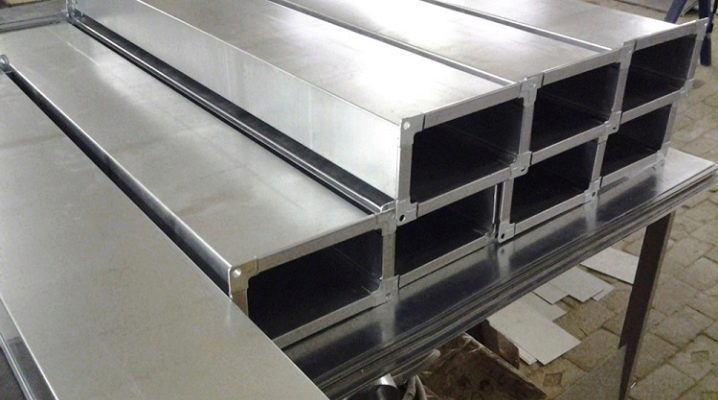
The ventilation system is a complex structure of elements of different sections, among which rectangular air ducts are popular. Transitions of this type are produced in different sizes, made from different materials. It is worth considering in more detail the features of rectangular ducts.
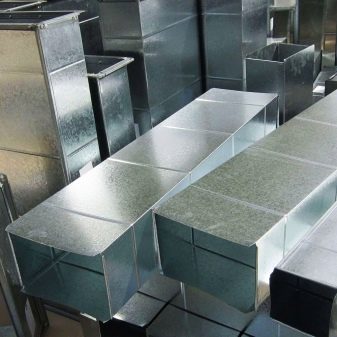
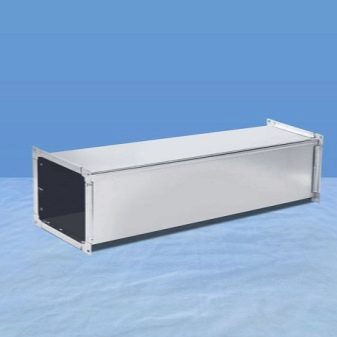
Advantages and disadvantages
The key advantage of a rectangular duct is a significant space saving and an attractive appearance, which cannot be said about a round element.... The system, assembled from rectangular ducts, has increased strength and rigidity, and also demonstrates reliable tightness of the connections. Other pluses include:
- demand;
- availability;
- ease of installation;
- fast removal of rarefied and polluted air.
Using rectangular ducts eliminates the need to install ducts, which also saves costs. Among the disadvantages of such elements, a strong increase in the resistance coefficient is distinguished if a transition from pipes of one section to another is organized.
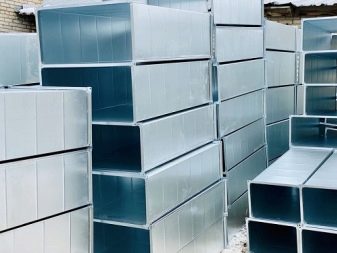
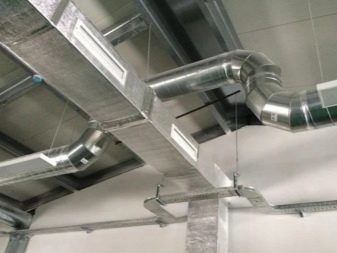
Where are they used?
Rectangular air ducts are used both for organizing independent ventilation systems and for laying branches, where a change in section is required. In such cases, cone-shaped elements equipped with a rectangular-section casing are used. At the other end of the rectangular ducts, a circle-like narrowing is provided to a smaller diameter in order to connect to the original element.
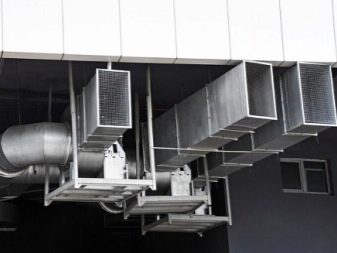
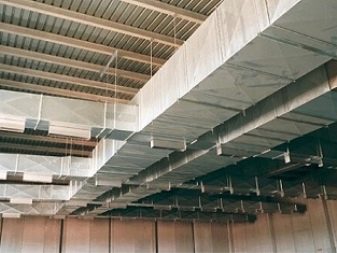
Materials (edit)
Air ducts for ventilation are made of different materials, including rigid ones. The most popular options are worth considering.
Plastic
Plastic pipes are considered the most demanded for the assembly of durable ducts of ventilation systems. Basically, such products are used for laying ducts from the hood. The advantages of PVC include:
- long service life;
- practicality;
- ease of installation;
- silent work.
Additionally, they highlight the ease of use, since the smooth walls of rectangular pipes do not collect dirt and are easy to wash. Manufacturers produce a huge range of PVC rectangular ducts.
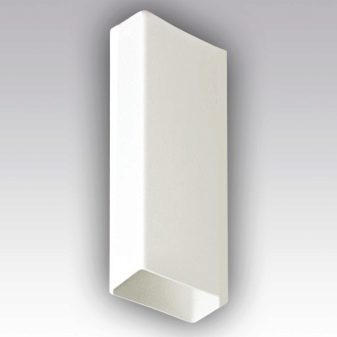
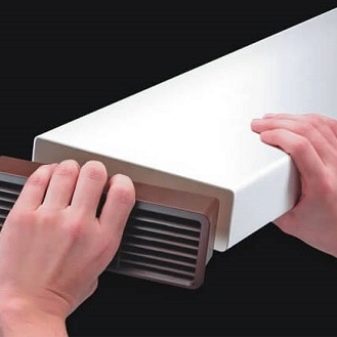
Metallic
The second most popular material from which ventilation elements are made is steel. There are three types.
- Galvanized metal... Basically, elements of straight sections are made of it, as well as fittings, the operation of which is planned at high temperatures.
- Stainless steel. Elements for work in aggressive environments are made of the material. For example, for a ventilation device in an environment with a gas temperature of up to 500 degrees Celsius.
- Black steel... It is used in the production of air ducts that carry the carrier at temperatures up to 400 degrees. Products are made from sheets up to 4 mm thick.
The ventilation market is represented by a large selection of rectangular ducts made of different materials. Each product has its own characteristics and features, which must be taken into account when choosing.
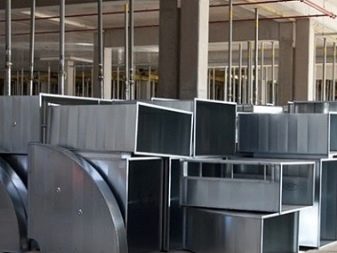
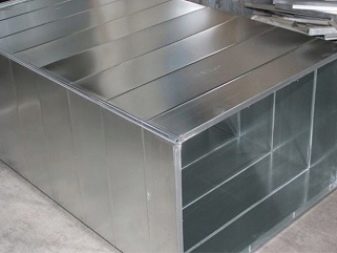
Dimensions (edit)
The production of air ducts is carried out in accordance with the requirements of regulatory documents.There is a table by which you can determine the ratio of the diameter and dimensions of a rectangular section of an element, as well as the weight, length and surface area of the structure. Standard sizes:
- Wall thickness - lies in the range from 0.55 to 1 mm;
- perimeter - does not exceed 2.5 meters in cross section.
Elements with a section of 220x90 mm are popular. The length of the hydraulic ducts is not limited and is determined based on the project. It is important that the cross-sectional dimensions are equivalent to the dimensions of the part with which the connection is made.
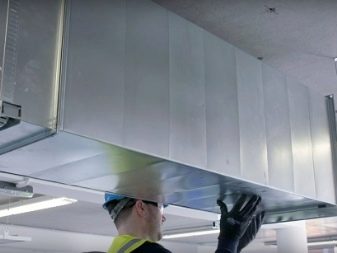
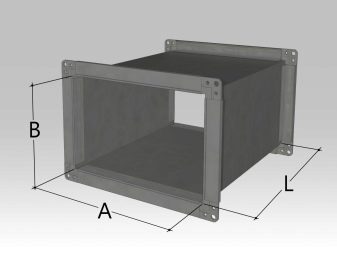
Top manufacturers
The ventilation systems market is represented by a wide range of rectangular air ducts. Every year, manufacturers update and expand their selection, offering new options for popular items.
Popular manufacturers.
- VTS Clima... A Polish brand that produces quality equipment for ventilation and air conditioning systems. The company produces flexible air ducts of various sections, the quality and reliability of the elements is confirmed by certificates.
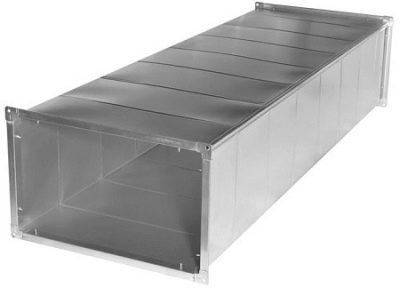
- Systemair... A group of companies headquartered in Sweden produces equipment that meets the requirements of international standards. The manufacturer's assortment includes rectangular air ducts of various sizes, which can be purchased at an affordable price.
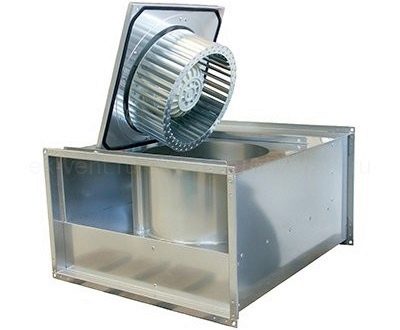
- Ostberg... A leader in its field, it is engaged in the production of accessories for ventilation systems, although initially it produced fans.

- "Arktos"... A manufacturer from Russia that attracts consumers with high-quality air ducts. The company owns its own research laboratory, so the quality of the products is confirmed by certificates.
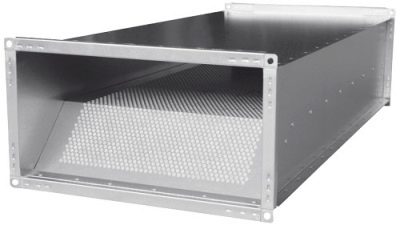
- "Moven"... Domestic brand that produces everything for the device of ventilation systems. The manufacturer's assortment includes rectangular air ducts with improved performance characteristics.
There are other companies on the Russian market that are ready to offer reliable products at competitive prices. Competition continues to grow, which is why it is not always possible to quickly find the right element.
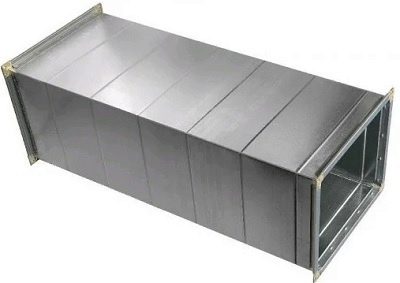
Connecting and fittings
Air ducts form a ventilation system when working together with shaped elements, including:
- stub;
- tie-in or flange;
- nipple;
- bends;
- transitions;
- straight sections.
And also to the shaped elements, capable of transferring ventilation into working condition, include a "duck", a tee, silencers and grilles. Often, hatches are included with the air duct.
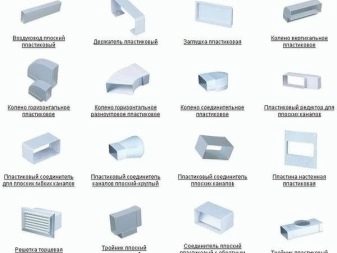
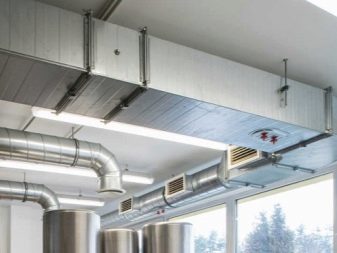
Section and length calculation
To begin with, it should be noted that the task of calculating the cross-section of the duct can have several interpretations:
- calculation of air ducts;
- air calculation;
- section calculation;
- calculation formula.


Any of the above is the same calculation, which is carried out according to the same type of scheme in 4 stages.
- Determination of air flow rate - indicator G. It is found according to a special formula and is expressed in m3 / s, therefore, to determine the indicator, the result must be divided by 3600.
- Setting the speed of air movement that will flow along the system. It is important to set the speed, you do not need to calculate anything at this stage. It should be borne in mind that a low air speed will ensure silent operation of the system, and a rapid flow will create noise and unnecessary vibrations. In general ventilation systems, air is usually dispersed up to 4 m / s. Large air ducts allow the flow to accelerate up to 6 m / s, and the removal systems even allow organizing a flow with a speed of 10 m / s.
- Calculation of the required cross-sectional area. It will be possible to calculate the indicator by applying a special formula, where the air flow rate is divided by a given speed.
- Air duct selection. At the third stage, an area will be obtained over which the optimal cross-section of a rectangular duct can be selected.It is better to select with a margin, so that unforeseen situations do not arise during operation.
The last stage should be carried out using regulatory documentation, which contains tables with popular air duct sizes.
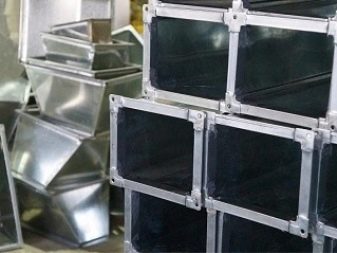
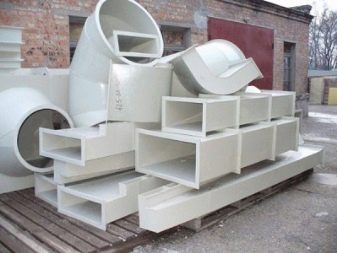
Mounting
Prepare before attaching the duct to a ceiling or wall. Basic materials and tools that will come in handy in your work:
- screwdriver;
- roofing scissors;
- mandrel;
- riveter;
- transition;
- air duct;
- fittings and other system components.

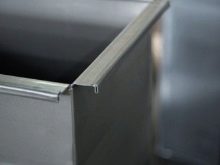
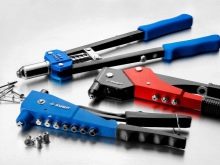
Other tools may be required, so it is worth considering the type of operation. When everything is ready, you can proceed with the installation. To begin with, it is worth disassembling the installation diagram of a rectangular duct without connecting to a round pipe.
- First, the total length of the branch is calculated, taking into account the dimensions of the fittings. If the length of the duct is short, assembly is carried out on site. Otherwise, large structures are installed in parts.
- Provides a tie-in check valve. It is worth noting that this item is not necessary in all situations, but you need to remember about it. And also, in some cases, a roof choke is mounted to the shaped element. Then it is worthwhile to first clarify the dimensions of the connecting part.
- Carry out the installation of a fire damper... It is a mandatory element of the ventilation system and must be installed in accordance with regulations.
- Provide a flexible insert for the fan, if provided by the project. In this case, the insert is installed with one side to the device nozzle, and the other to the channel.
The installation of the system is completed by installing a deflector, which is placed on the ventilation pipe. After the ventilation is checked, and if necessary, defects are eliminated. It is worth noting that the regulatory documents also stipulate the requirements for the installation of rectangular blowers. Therefore, any actions must comply with the instructions of the standard without any deviations. Otherwise, the likelihood of destruction of the system is high. At the moment of attachment, it is also worthwhile to provide for thermal insulation.

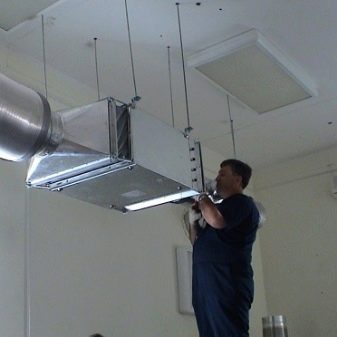
When installing air ducts, special attention should be paid to the connection of elements.
Common mistakes.
- Installing damaged products... Before installation, carefully check the integrity of the duct. If deformations or cracks are found, the element should be replaced.
- Insufficiently tight docking... The ventilation system must be as tight as possible in order to prevent any damage and avoid misuse. Therefore, if a similar problem is found, it is worth using sealants, or reassembling the channel.
- Lack of grounding. Relevant when assembling a system from steel ducts. Over time, the line accumulates static electricity, which, in the absence of grounding, does not lead to the most pleasant consequences.
And also in the form of an error is the use of cheap, low quality components. The reliability of the elements must be confirmed by certificates.
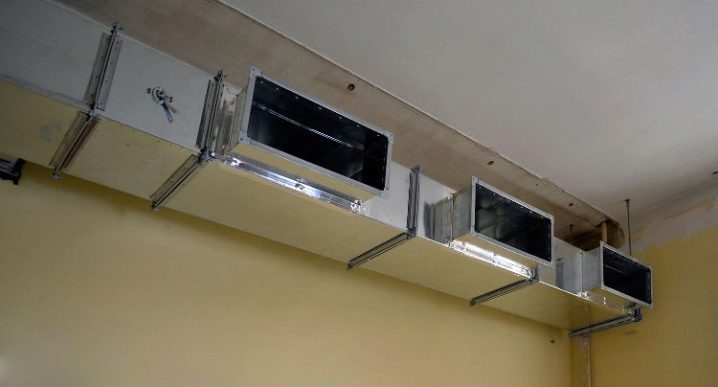
Interconnection
The second option for using rectangular ducts is to organize the transition from a round to a rectangular section. Such situations arise quite often, and are often foreseen by the project. To start work, you need to purchase special adapters, which are made of stainless steel up to 2 mm thick. Methods for connecting transition elements.
- Flange mount... It is carried out using inserts - special parts that are welded on the square side, and fastened with bolts and nuts from the round side, ensuring reliable fixation of the elements.
- Rail mount. In this case, preference is given to details, the shape of which resembles an ordinary corner. During installation, one bend of the element is installed inside the pipe and screwed with self-tapping screws.The remaining bend protruding at an angle to the surface is connected to another duct using a latch or by stamping.
- Nipple mount... Provides the ability to connect round ends. The method is simple: between the pipes, special parts are mounted, equipped with a zig-ledge in the middle. The nipple is fixed with clamps.
- Welded mount. It is considered the most reliable and airtight way of connecting elements. However, this will require the help of a specialist and welded equipment.
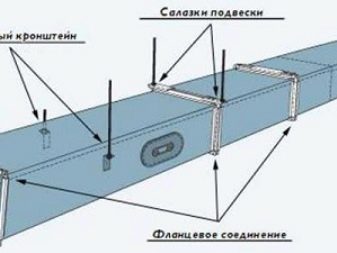
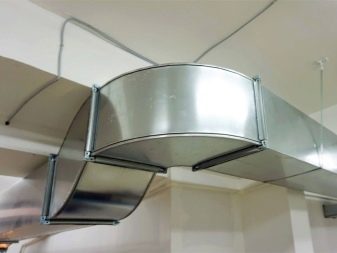
Welded air ducts do not require additional sealing. In all other cases, it is recommended to equip the joints with rubber seals to prevent premature failure of the system. When choosing the method by which the connection of the elements of the ventilation system will be organized, it is worth considering the cost, reliability and ease of installation of fasteners.
If there is no welded equipment and a professional at hand, it is better to give preference to more budgetary and simple options.
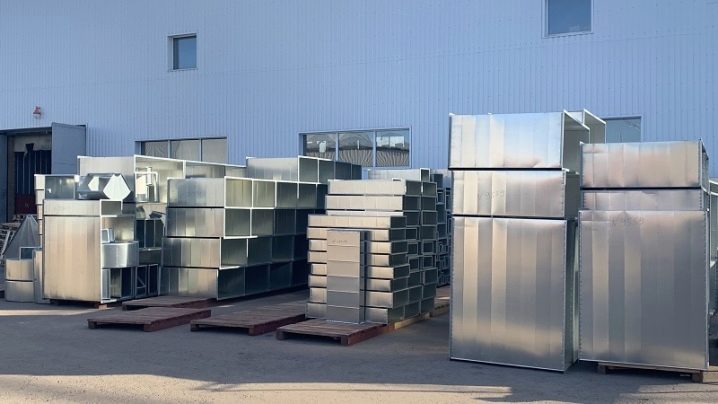













The comment was sent successfully.